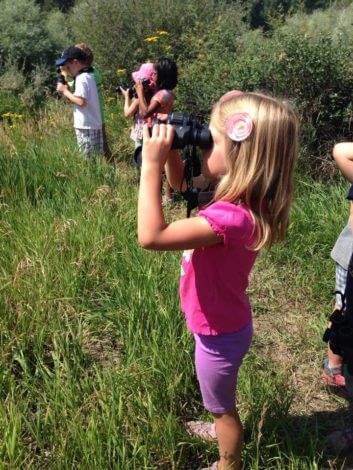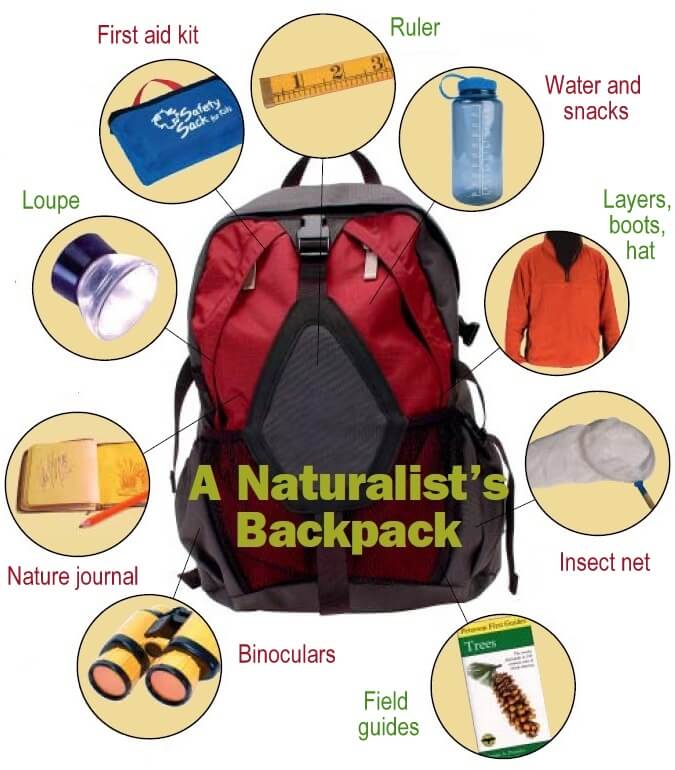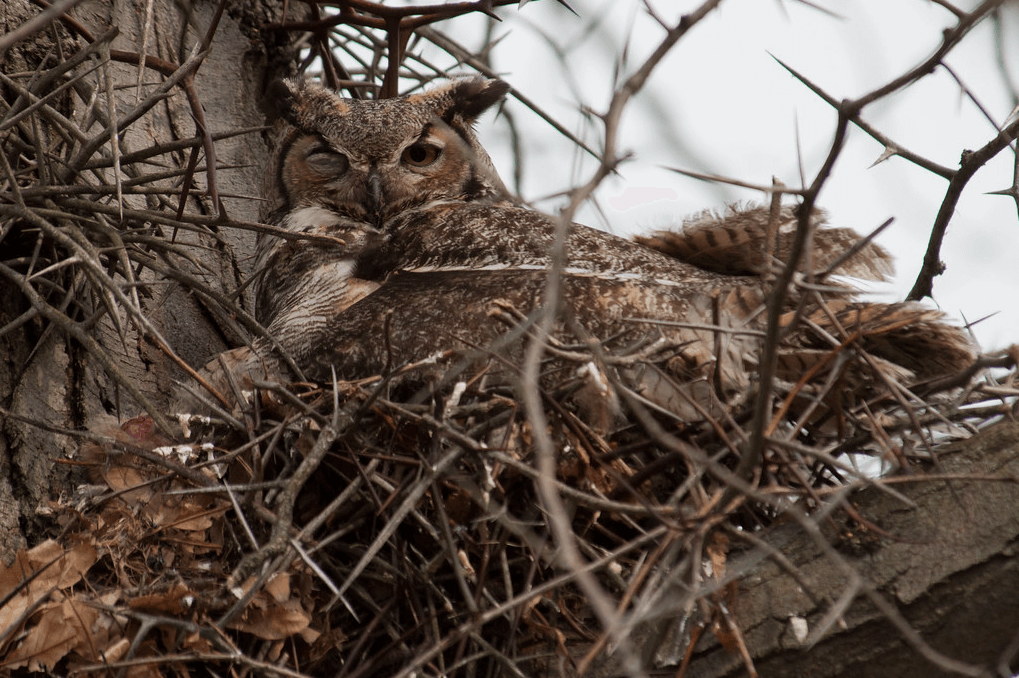 What are the skills of a naturalist? Listening, looking, smelling, touching, and even tasting (but check with a grownup first)—using all your senses to notice what is going on in the world around you. Try this: find a spot in your backyard, in a park, by the river, in a forest, or anywhere. Sit quietly with your eyes closed for a few minutes. What do you hear? Now open your eyes and focus on something close up—a rotting log, a bush, or a flower, for example. Spend several minutes just looking at every part of your subject. What did you notice that you didn’t see right away? You might want to pack a few simple items to help you explore further.
What are the skills of a naturalist? Listening, looking, smelling, touching, and even tasting (but check with a grownup first)—using all your senses to notice what is going on in the world around you. Try this: find a spot in your backyard, in a park, by the river, in a forest, or anywhere. Sit quietly with your eyes closed for a few minutes. What do you hear? Now open your eyes and focus on something close up—a rotting log, a bush, or a flower, for example. Spend several minutes just looking at every part of your subject. What did you notice that you didn’t see right away? You might want to pack a few simple items to help you explore further.
Insect net: To find out what’s hiding in plain sight, hold a net against a stream’s current and gently kick up the bottom some to catch aquatic insects and larvae, or sweep a net through grass (without hitting the ground!). You will be amazed! Stream nets have a finer mesh than aerial nets. You can find both online at acornnaturalists.com.
Field guides: There are scores of guides available, covering topics from mammals to winter shrubs. Some use categories (birds, trees, grasses); some use habitat types (forests, deserts); some use regions (Rocky Mountains, Glacier National Park). You can pick the one that works best for you depending on your interests. Consider how easy it is to carry and whether it provides useful and easy-to-read keys or maps. And of course, there are some great smartphone apps, too, for everything from birds to plants to mammals.
Binoculars are not essential, but they can be useful and fun for close-ups of birds or for scanning far-off slopes for bears or other animals. Higher-quality lenses mean brighter and sharper images, so buy the best you can afford. More expensive binoculars tend to be more durable as well. Seven- or eight-power binoculars are lightweight, produce bright images, and give a wider field of view than higher-power ones.
Nature journal, colored pencils, pens: Get into the habit of recording observations and impressions during walks. Let each of your senses speak. Surprise yourself with your drawing skills when you give yourself time to look at something closely.
Magnifying loupe: If you’re someone who likes to look down rather than up, these small, inexpensive magnifiers can help you identify and appreciate the details of insects, plants or rocks. Also available from acornnaturalists.com.

First aid kit: Think safety. Band-aids, of course. Sunscreen, lip balm. Also an anti-itch cream for encounters with biting bugs and an antihistamine to keep allergic reactions from driving you indoors. Don’t forget to replenish supplies in your kit before you hit the trail.
Rulers are helpful when you want to note the size or scale of an interesting discovery in your journal or with a camera.
Water, water, water! Whether you’re out for an hour or a day, staying hydrated is important. Keep your energy up with appropriate and easily portable snacks—nuts, dried fruit, and energy bars, for example.
Layers and appropriate clothing! Regardless of conditions, layers help make your outdoor time comfortable and enjoyable. Wool and fleece are great for retaining body heat when wet, but fleece dries more quickly. Pair a fleece jacket with a windbreaker. Stashing rain pants and a jacket into your pack is always a good idea. Also, sturdy, comfortable, quality boots that are well broken in are essential. An extra pair of socks for longer adventures can give your feet a breather. And finally, don’t forget a brimmed hat. If the day is cool and cloudy, or you’ve worked up quite a sweat, a fleece or wool cap will keep the chill off.
Safety note: If you a planning a trip into the back country, you’ll want a topographic map of the area and a compass to keep you on track. Other items, such as matches in a waterproof container and a pocket knife, could come in handy. And remember: before you head out, let someone know where you’re headed and when you expect to be home, especially if you’ll be gone overnight.
Thanks to contributor Cassie Carter, former Executive Director of the Montana Outdoor Science School in Bozeman, MT. To learn more about MOSS, visit their website: outdoorscience.org.
This article was originally published in the Fall 2004 issue of Montana Naturalist magazine, and may not be reproduced in part or in whole without the written consent of the Montana Natural History Center. ©2004 The Montana Natural History Center.
Click here to read more articles from Montana Naturalist magazine.
Want to learn more about our programs? Sign up for our e-newsletter! You can also become a member and get discounts on our programs as well as free reciprocal admission to 300+ science centers in North America!












